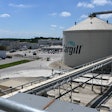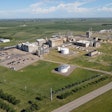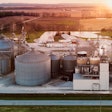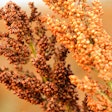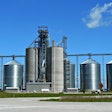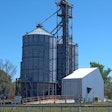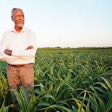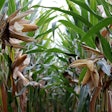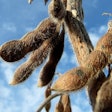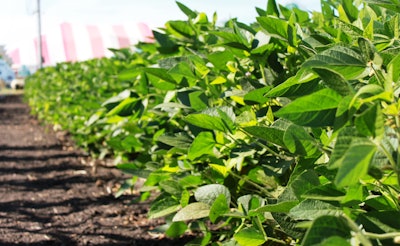
The USDA's survey of U.S. crop producers last month revealed intentions to plant 81.493 million acres of soybeans this year. That is 3.765 million more than reported as planted or intended to be planted in June of last year, 4.96 million more than actually planted in 2013, and 4.042 million more than the previous record acreage in 2009. Planting intentions exceed last year's acreage in every major soybean state except Missouri, with the largest increases reported for Minnesota, Nebraska, and North Dakota. A slightly smaller percentage of plantings will likely be double-cropped acreage since soft red-winter wheat acreage was reported to be down by 16 percent from acreage of a year ago.
大增加大豆种植的意图reflects strong world demand for soybeans and the resulting high prices of soybeans relative to other crops, particularly corn. As the planting season gets underway, the job of the markets is to direct final planting decisions of major spring-planted crops. That is a complicated process surrounded by a lot of uncertainty about the nature of the growing season and resulting yields, as well as uncertainty about the strength of demand for U.S. crops during the year ahead. That demand strength, in turn, depends on the magnitude of production in the rest of the world and a number of economic and political developments. There are differing and changing assessments of all of these factors. The market, however, must direct planting decisions without knowing the outcome of these important factors. Ideally, production would be at levels that provide "reasonable" prices for both producers and consumers of the crops and some level of reserves at the end of the year.
The USDA projects consumption of U.S soybeans and soybeans imported in to the U.S. during the current marketing year at 3.36 billion bushels, equal to the record consumption during the 2009-10 marketing year. Consumption is large in spite of continued high prices and back-to-back record production of soybeans in the rest of the world during the 2012-13 and 2013-14 marketing years. World consumption of soybeans during the current marketing year is projected at a record 9.884 billion bushels, 40 percent more than consumed 10 years ago. Much of the growth in world consumption has occurred in China, up 130 percent in 10 years. While it may not be reasonable to expect Chinese consumption to continue to grow at the pace of the past 10 years, there is no sign of a reversal in consumption. The U.S. should continue to have a large share of exports to China even with another large South American crop in 2015. Record high livestock prices and a likely increase in biodiesel production should keep domestic soybean consumption large as well.
假设下的“合理”价格,large South American production, and slower but continued growth in word soybean consumption during the year ahead, consumption of U.S. and imported soybeans should be at least as large as during the current marketing year. With stocks of soybeans at the start of the 2014-15 marketing year at the projected level of 135 million bushels, a 50 million bushel decline in marketing year imports from the record level of this year, and a more comfortable level of year-ending stocks near 185 million bushels, the 2014 U.S. soybean crop would have to total 3.395 billion bushels to accommodate consumption of 3.36 billion bushels. That would be 106 million bushels larger than the 2013 crop and 36 million bushels larger than the record crop of 2009. With a favorable growing season and a U.S. average yield near trend value of 44.2 bushels, a crop of that size would require 76.8 million harvested acres of soybeans. The difference between planted and harvested acreage varies from year to year, depending primarily on the extent of adverse weather. The average difference in the previous 10 years was 970 thousand acres. With larger planted acreage and normal weather, abandonment near one million acres might be expected in 2014. A crop of 3.395 billion bushels, then, would require planted acreage of about 77.8 million.
It could be argued that the projection of marketing year consumption used here is too conservative under the assumption of lower prices. If use is 100 million bushels larger, planted acreage would need to be near 80.1 million under the other assumptions made here. Additionally, the market may need to encourage even more acreage to reflect the risk of an average yield below trend value. Consumption of 3.46 billion bushels and a yield of 43 bushels per acre, for example, would require planted acreage near 81.3 million acres. That is marginally less than reported planting intentions.
Over the past 10 years, planted acreage of soybeans in the U.S. has differed by as much as 3.3 million acres from March intentions and the market still has some time to influence the magnitude of acreage in 2014. Unless conditions change dramatically, however, it appears that planting intentions reported last month are fully adequate to meet consumption needs at more modest price levels than experienced during the past three marketing years.
Issued by Darrel Good
Department of Agricultural and Consumer Economics
University of Illinois









